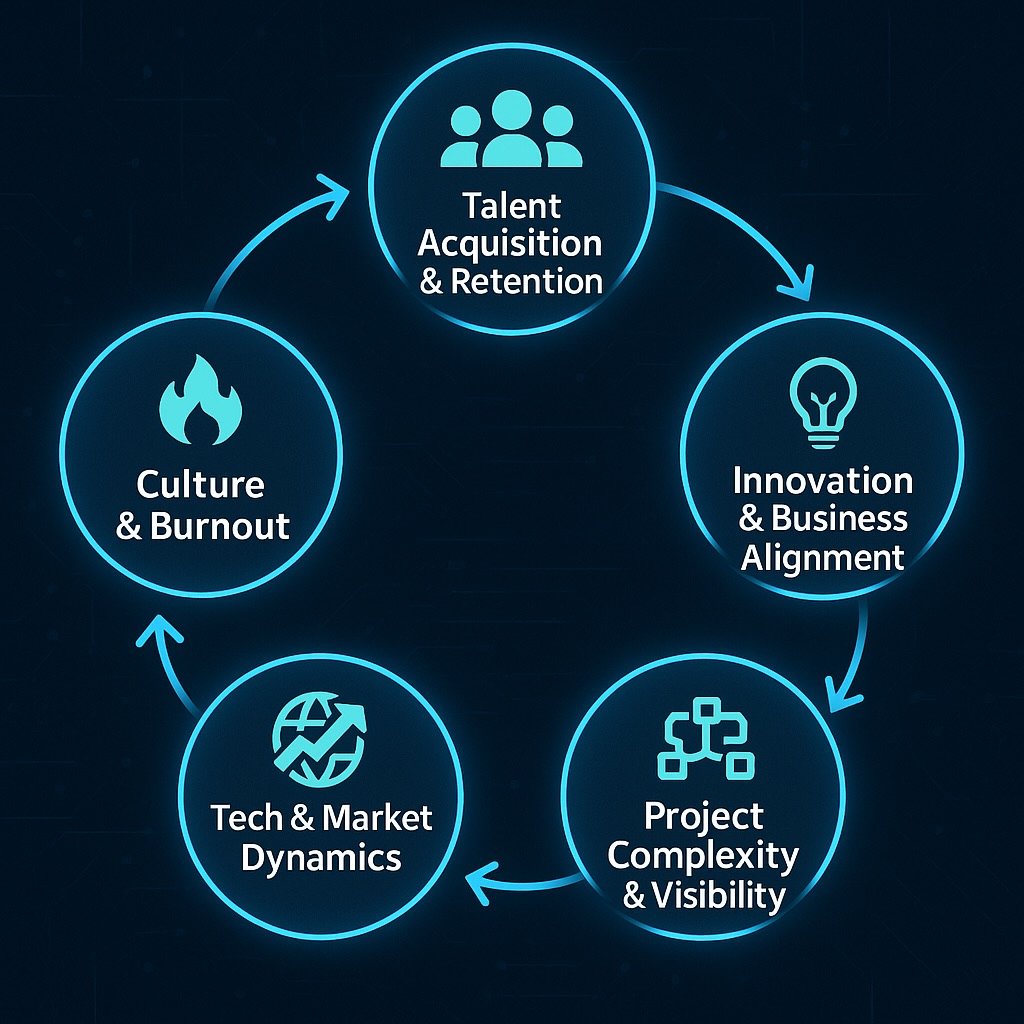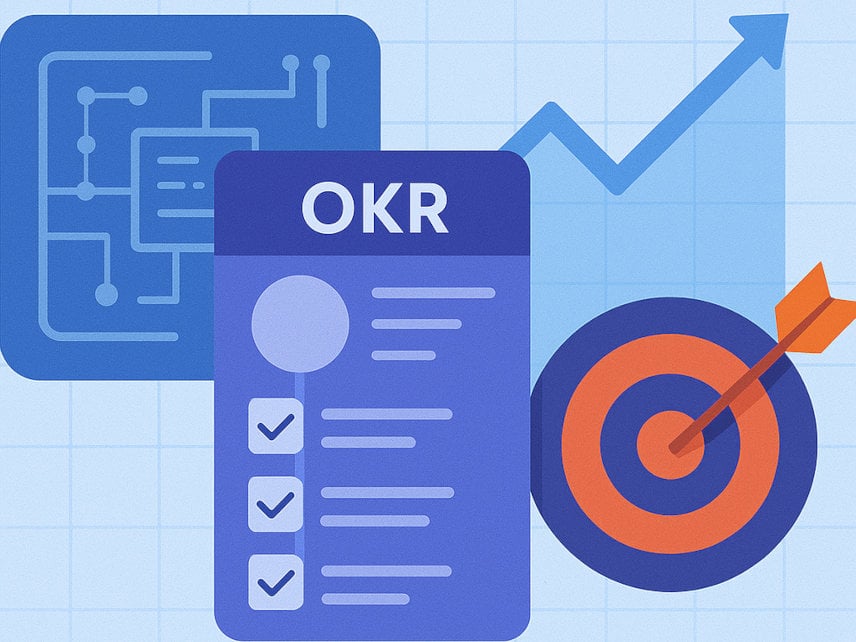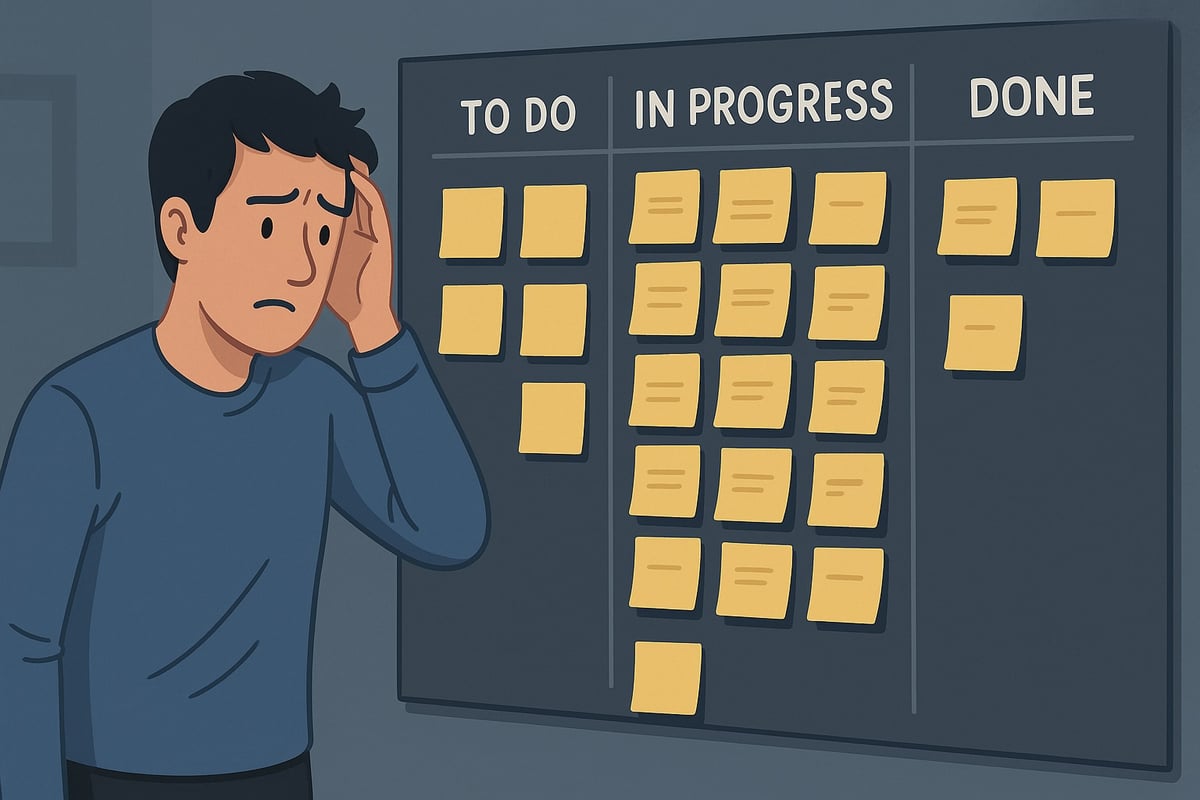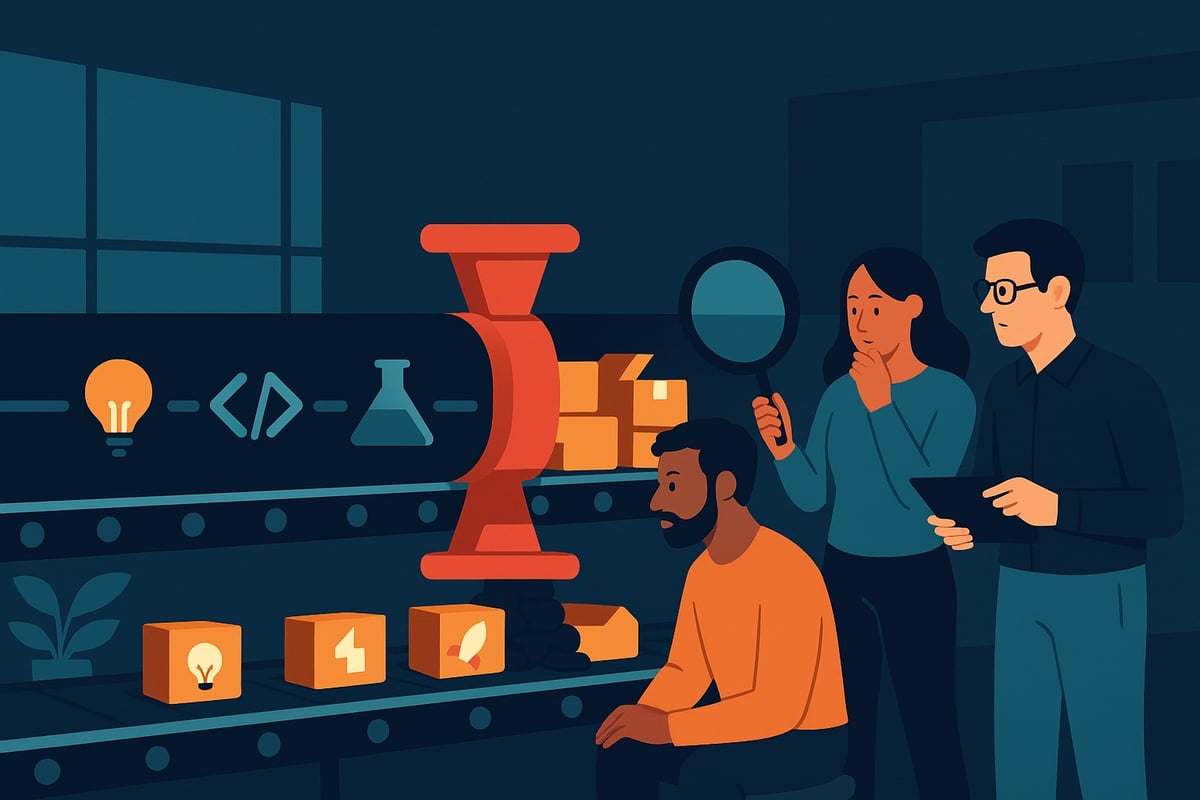Engineering leadership has never been more critical, or more challenging. As we navigate the complex landscape of 2025, technology leaders face a perfect storm of interconnected challenges that directly impact their ability to deliver value, innovate, and maintain team health. Based on extensive research with organizations of all sizes, I’ve identified the top five challenges that are keeping engineering leaders up at night this year.
What makes these challenges particularly daunting is their interconnected nature. Each problem compounds the others, creating a cycle that can be difficult to break. The good news? Understanding these relationships is the first step toward implementing effective solutions.
Challenge 1: Talent Acquisition, Retention & Skills Gap
The persistent difficulty in securing and retaining top engineering talent remains a primary concern for leaders. This challenge is compounded by a noticeable shortage of experienced mid-level engineers capable of mentoring junior staff and bridging the gap between entry-level and senior roles.
Many organizations report feeling understaffed, even “anemic,” while simultaneously facing demands to achieve more with fewer resources. Research shows that this talent shortage directly impacts project timelines and the ability to innovate, creating a cycle of pressure. Studies indicate that 37% of technical projects face delays due to talent mismatches.
The consequences are far-reaching:
- Senior engineers become overburdened, splitting time between complex technical work and mentoring
- Project delivery becomes less predictable as teams stretch to cover skill gaps
- Innovation suffers when teams are focused mainly on keeping up with existing workloads
Strategic mitigation approach: Addressing this requires more than just competitive compensation; it necessitates creating a compelling employee value proposition that includes clear opportunities for professional growth and a stimulating work environment. The trend towards skills-based hiring further emphasizes the need for robust internal talent development and mentorship programs.
Challenge 2: Balancing Innovation, Practicality & Business Alignment
Engineering leaders operate under constant pressure to deliver groundbreaking products and features while adhering to strict budgetary constraints and project timelines. This delicate balancing act demands strong prioritization skills and effective resource allocation.
A significant related challenge is aligning engineering initiatives with overarching business priorities. IndustrySelect notes that leaders often struggle to translate complex technical information into understandable terms for non-technical stakeholders, hindering collaboration, strategic decision-making, and securing necessary investment. This disconnect can lead to engineering efforts being perceived as misaligned or their impact being underestimated. Research indicates that over half of engineering leaders are unable to articulate how their projects contribute to revenue targets.
The challenge becomes particularly acute when:
- Technical debt accrues but its business impact is difficult to quantify
- Innovation initiatives compete with maintenance for limited resources
- Business stakeholders push for features without understanding technical constraints
Strategic mitigation approach: Successful leaders are implementing value stream mapping and strategic planning frameworks that explicitly connect technical initiatives to business outcomes. This involves developing a shared language with business stakeholders and creating metrics that demonstrate the ROI of engineering investments.
Challenge 3: Managing Project Complexity & Workflow Visibility
Modern engineering projects are increasingly intricate, involving numerous stakeholders, diverse skill sets, and advanced technologies. Leaders report that project organizations can be slow in the front-end phases, leading to poor quality deliverables and delays. Execution is often described as “a mess.”
A major contributing factor is the lack of visibility into the Software Development Life Cycle (SDLC) and developer workflows. According to Hatica, a weak SDLC is a “silent velocity killer,” with limited visibility creating “SDLC blockers” that make it difficult to identify bottlenecks, prioritize effectively, or accurately report progress.
The reliance on manual data gathering from disparate tools for status updates is a significant pain point, consuming valuable time and often resulting in inaccurate reporting. Research shows engineers are spending more and more time each week reconciling status updates across various platforms. Without clear visibility, managing complex projects and optimizing processes becomes exceptionally difficult.
Strategic mitigation approach: Forward-thinking organizations are implementing integrated metrics dashboards that provide real-time visibility into developer workflows, code quality, and project progress. Process analysis and optimization efforts, paired with implementing standardized metrics frameworks like DORA or SPACE, are helping leaders gain the visibility they need to make informed decisions.
Challenge 4: Adapting to Technological & Market Dynamics
The engineering field is characterized by relentless innovation. Leaders must continuously stay informed about technological advancements (e.g., AI, cloud, IoT, DevOps) to maintain a competitive edge. However, the sheer volume of information can be overwhelming, making strategic adoption and prioritization difficult.
Simultaneously, leaders must navigate a shifting regulatory landscape and adapt to rapid market fluctuations that impact product demand and development priorities. This requires agility and responsiveness while maintaining a long-term strategic perspective.
According to McKinsey, AI advancements have set new expectations about what development teams can achieve, with research showing that AI and low-code platforms can improve developers’ productivity by up to 45%. Teams that lack proper adoption of these technologies face considerable challenges with increasingly rapid technological advancement.
Strategic mitigation approach: Successful engineering leaders are establishing formal technology evaluation frameworks and change management processes that allow them to systematically assess and adopt new technologies. Regular strategic roadmapping exercises help maintain alignment between technological choices and business goals while creating space for controlled innovation.
Challenge 5: Cultivating Culture & Preventing Burnout
Fostering a positive and productive engineering culture is paramount, especially with the rise of remote and hybrid work models. Key challenges include promoting effective teamwork and collaboration among diverse teams, ensuring team well-being, and managing performance expectations to avoid burnout.
Dysfunctional elements like micromanagement, blame culture, and unsustainable workloads (evidenced by developers regularly working outside standard hours) actively undermine performance and morale. Research shows that micromanagement costs the global engineering economy significantly through slower decision cycles and reduced innovation. Building a culture of high performance that is also sustainable requires conscious effort in leadership style, process design, and prioritizing psychological safety.
Research emphasizes that the pressures stemming from the talent gap, project complexity, and the need for rapid adaptation all contribute to increased burnout risk if not managed proactively. More and more mid-level engineers are affected by burnout from unsustainable workloads.
Strategic mitigation approach: Leading engineering organizations are implementing regular team health assessments, establishing clear work boundaries, and focusing on outcome-based performance metrics rather than hours worked. Leadership development programs that emphasize coaching rather than micromanagement are helping create environments where engineers can thrive.
The Interconnected Nature of These Challenges
These challenges are not isolated issues, they form an interconnected system where each exacerbates the others. For example:
- The talent shortage (Challenge 1) directly impacts a team’s capacity to handle complex projects (Challenge 3) and innovate while meeting deadlines
- This lack of experienced personnel, particularly at the mid-level, means senior engineers are often overburdened, splitting time between complex technical work and mentoring
- Without clear insights into where time is spent and where bottlenecks occur (Challenge 3), leaders cannot effectively manage resources, address inefficiencies, or accurately communicate progress to stakeholders
- This lack of visibility hinders agility and makes adapting to market or technological shifts (Challenge 4) even more difficult
- The resulting pressure and inefficiency increase burnout risk (Challenge 5), potentially worsening retention issues
Holistic solutions required: Addressing these challenges requires a holistic approach that considers the interplay between people, processes, technology, and culture. Solutions focused solely on one area are unlikely to yield sustainable results.
The Path Forward
The most effective engineering leaders in 2025 are taking a systematic approach to these challenges:
- Invest in people - Develop robust talent pipelines and create environments where engineers at all levels can grow and thrive
- Improve visibility - Implement systems and metrics that provide clear insights into engineering workflows, allowing for data-driven optimization
- Connect to business outcomes - Establish frameworks that explicitly link technical work to business value, enhancing alignment and securing necessary resources
- Build adaptability - Create processes for evaluating and adopting new technologies in a controlled manner
- Prioritize sustainability - Focus on creating a culture that balances high performance with long-term well-being
By addressing these challenges holistically, engineering leaders can transform potential obstacles into opportunities for differentiation and growth. The organizations that navigate these waters most effectively will be positioned to outperform their competitors not just in technical innovation, but in business impact as well.
What challenges is your engineering organization facing in 2025? I’d love to hear your experiences and discuss potential solutions.








